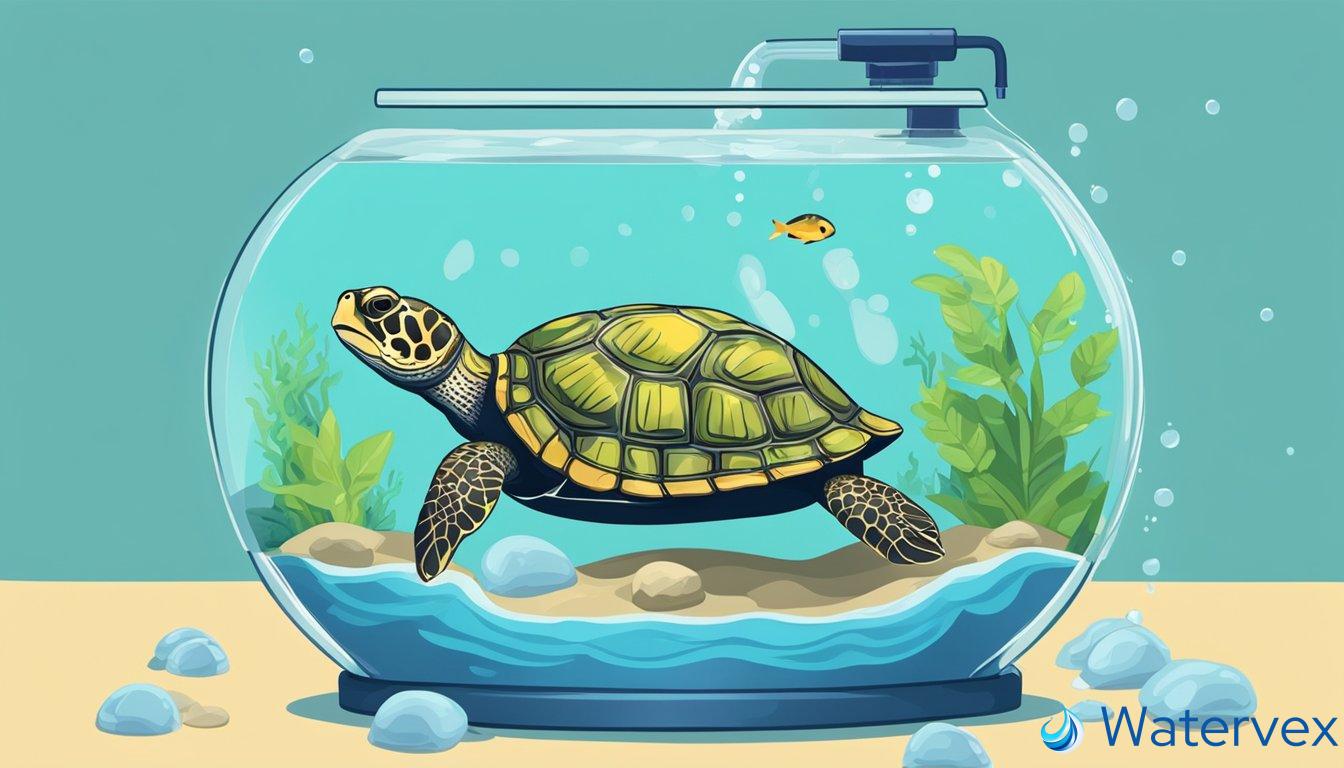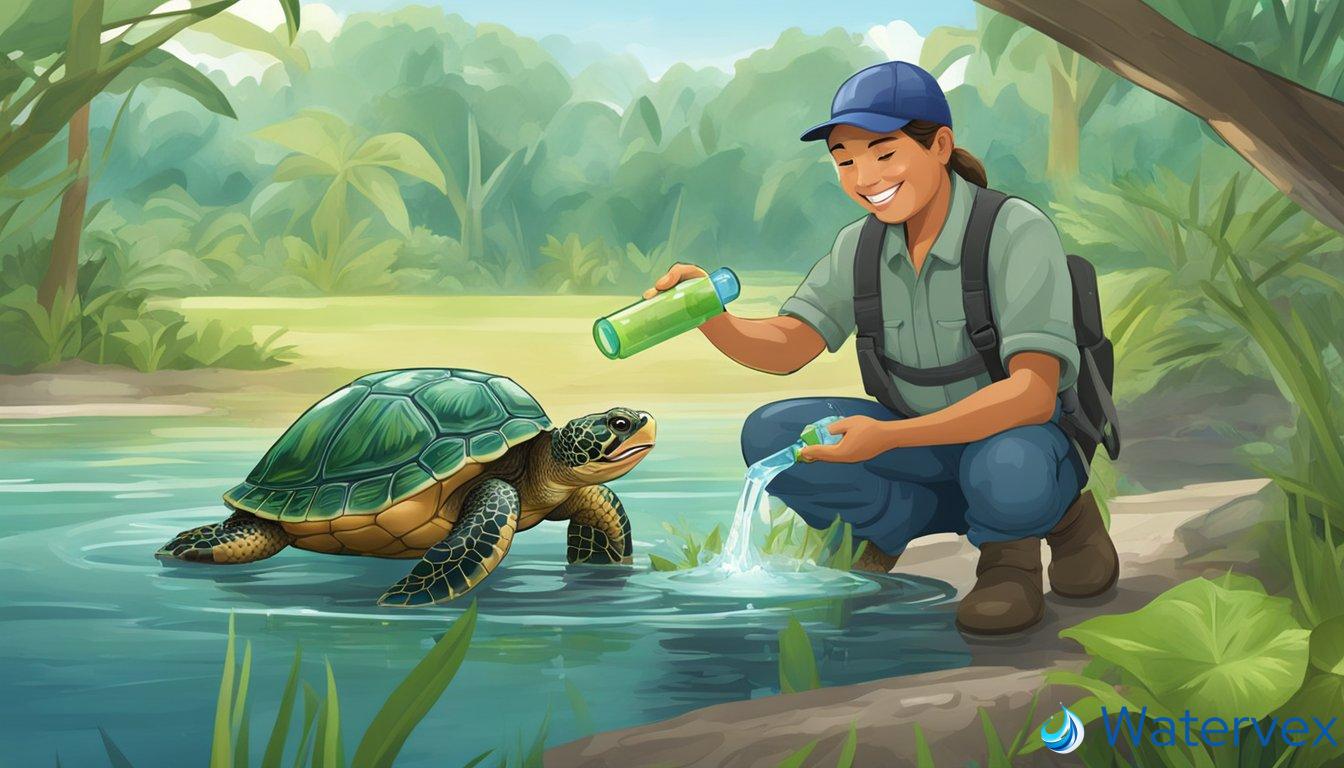When considering the care of your aquatic turtles, the quality of the water in their habitat is paramount to their health. It’s not uncommon to question whether the water conditioners designed for fish are suitable for turtles. Given that turtles are sensitive to the same harmful chemicals in tap water that fish are, such as chlorine and chloramines, you might assume fish water conditioners are appropriate. However, it’s essential to understand that the biological needs of turtles can differ from those of fish, and using a fish water conditioner for turtles requires careful consideration.

The use of a fish water conditioner in a turtle tank can be a practical solution when you’re attempting to create a safe aquatic environment. Many of these conditioners effectively neutralize the chemicals and heavy metals dangerous to both turtles and fish, making the tap water safe for your shelled pets. Yet, it’s crucial to inspect the specific ingredients and their concentrations in the conditioner being used, as turtles may require different dosage levels or may react differently to certain additives.
Consequently, when you’re looking at treating your turtle’s water, it is not as simple as swapping one conditioner for another. Despite similarities in the products, ensuring your turtles thrive means paying attention to their unique habitat requirements. Regularly monitoring water quality, understanding the components of water conditioners, and knowing the specific needs of your turtles are all essential steps in maintaining their health.
Key Takeaways
- Fish water conditioners may be utilized for turtles but require cautious application.
- Turtles have distinct sensitivities and habitat needs differing from those of fish.
- Regular water quality checks and knowledge of water treatment products are crucial for turtle health.
Is Fish Water Conditioner Safe for Turtles?
When considering the use of fish water conditioner in turtle tanks, it’s essential to understand its safety profile, especially since turtles have different requirements than fish.
Evaluating Safety for Turtle Tanks
Chemical Composition: Fish water conditioners primarily aim to neutralize chlorine and chloramines, making tap water safe for fish. While these chemicals are also toxic to turtles, the specific needs of turtles mean that a product safe for fish may not automatically be turtle-safe. For example, some fish water conditioners might contain additives that could cause health problems in turtles, who are more sensitive to certain chemicals.
Ammonia Control: Another aspect to consider is the efficacy in ammonia reduction. Turtle tanks often amass higher levels of ammonia due to their waste. While fish water conditioners might help in controlling ammonia, they might not be formulated to handle the sheer amount produced by turtles, possibly leading to unsafe water quality.
Dosing Instructions: It’s crucial to follow dosing instructions precisely, as overdosing can lead to harmful chemicals building up in the tank. Conversely, underdosing might not adequately deal with the toxic elements in the water.
To ensure you’re choosing a safe water conditioner for your turtle, it’s wise to opt for a product marked as turtle-safe or seek advice from a reptile specialist. Keep in mind that safe handling of chemicals is paramount to prevent inadvertent introduction of toxic substances into your turtle’s environment.
Differences Between Turtle and Fish Water Treatments

When considering water treatments for aquatic environments, it’s crucial to understand the distinctions between products designed for fish and those tailored for turtles. These differences largely pertain to the chemical composition and the impacts on the respective creatures inhabiting the waters.
Chemical Composition and Effects on Turtles
Turtle-specific water conditioners are formulated to cater to the unique biology of turtles. These products often focus on neutralizing harmful chemicals such as chlorine and chloramine, which are commonly found in tap water. Unlike fish water conditioners, turtle water conditioners may contain additional components to specifically address the pH levels and mineral content appropriate for turtles, which differ from those required by fish. It’s essential to keep in mind that exposure to metals like copper and lead can be particularly toxic to turtles and the right turtle water conditioner will neutralize heavy metals, ensuring a safer environment for your shelled friends.
Specific Water Conditioners for Turtle Tanks
When selecting a water conditioner for a turtle tank, consider opting for a turtle-specific water conditioner. These products are explicitly designed to remove not just chlorine and chloramine, but also to effectively manage heavy metals and minerals that can pose risks to turtles. The presence of beneficial bacteria in some turtle water conditioners is an additional perk, as these help to maintain a balanced aquatic ecosystem within the tank. Although fish water conditioners often mitigate similar risks, such as chlorine and heavy metals, the formulation might not be optimal for turtle tanks, potentially leading to imbalances or health issues for turtles.
Properly Conditioning Water for Your Turtle’s Habitat

Creating a proper environment for your turtle involves more than just filling the tank with water. Careful attention to water quality, including the use of conditioners, is essential for your turtle’s health.
Step-by-Step Instructions
Test the Water: Begin by testing the pH level and the concentration of ammonia, nitrites, and nitrates in your tap water to understand your baseline water parameters. Ideal pH levels for turtles tend to be within the range of 6.0 to 8.0.
Dechlorinate: If your tap water contains chlorine or chloramines, it’s necessary to dechlorinate it to make it safe for turtles. Use fish water conditioner at the recommended dosage based on the volume of your tank.
Dose Accurately: Follow the dosage instructions provided on your water conditioner label closely. An improper concentration can disrupt the pH balance or potentially harm your turtle.
Introduce Bacteria: Especially with new setups, consider adding beneficial bacteria that will establish a healthy filtration system and aid in breaking down waste products.
Adjust Temperature: Ensure the water’s temperature stays consistent, usually between 72-77°F (22-25°C), to provide a stable environment and reduce stress for your turtle.
Frequent Water Changes: Perform regular water changes, removing and replacing 25-50% of the tank water every two weeks to ensure consistently clean water.
Maintaining a Healthy Turtle Tank
- Regular Monitoring: Regularly check the water parameters to detect any harmful changes in water quality. Unlike fish, turtles can rapidly contaminate their water, so vigilance is key.
- Effective Filtration: Maintain a robust filtration system that is rated for a tank larger than your actual setup to handle heavy bio-load and maintain proper oxygen levels.
- Consult a Veterinarian: Consult with a veterinarian if you’re unsure about the aquasafe levels or if your turtle shows signs of stress or illness. They can assist you with specific water quality recommendations for your pet.
- Minimize Contaminants: Be cautious about what goes into your turtle’s tank. Avoid overfeeding and promptly remove uneaten food to keep the habitat clean from excess bacteria and contaminants.
Regular maintenance and careful conditioning of your turtle’s habitat water will help ensure a healthy home for your shelled companion.

